This week I held an offsite for my engineering leadership team. My two aims were to do some formation activities as we have a few new faces in the team and to come away with a plan of what we wanted to achieve in the next 12 months. I collated a few activities from different sources so I thought I’d write a bit about the flow of the day.
Session 1 - Journeylines
This exercise comes from Coaching Agile Teams by Lyssa Adkins. The purpose is to get everyone to introduce themselves each other, to find out their skills, what drives them and to get a better understanding of them beyond their existing role.
I started by describing the exercise to the team and showed them my own journeyline (which I had prepared the evening before).
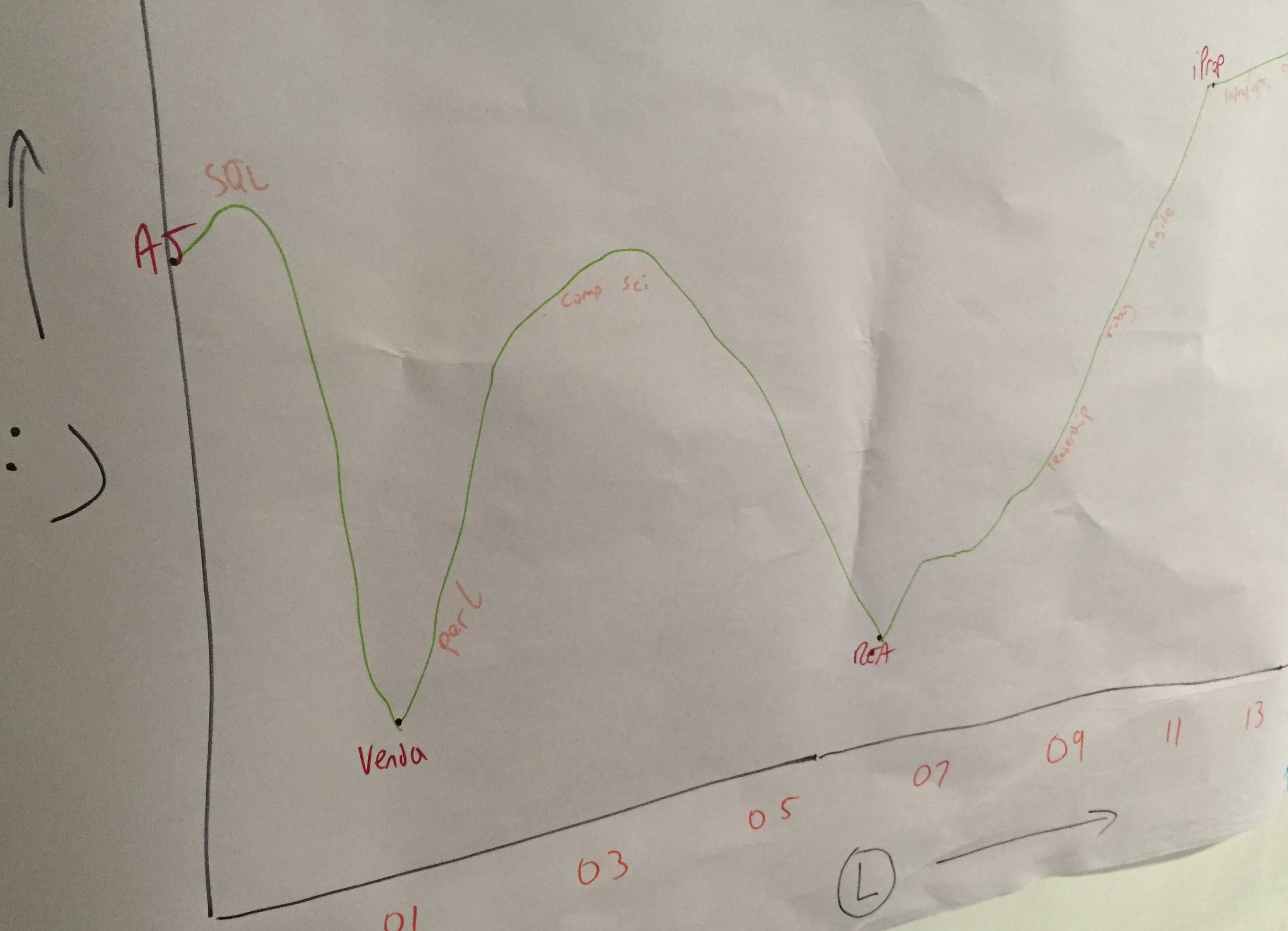
I described how it showed my mood throughout my career with various milestones and annotated with the skills that I learned at the time. The focus is on clarity rather than great design skills (as mine clearly demonstrates) but the participants are welcome to illustrate their own journeyline. I then gave the group 20 minutes to sketch out their journeylines individually. The only materials needed are large sheets of paper and various coloured pens. Smaller pieces of paper for rough work are also handy (most people start out on one line, get so far and start again.
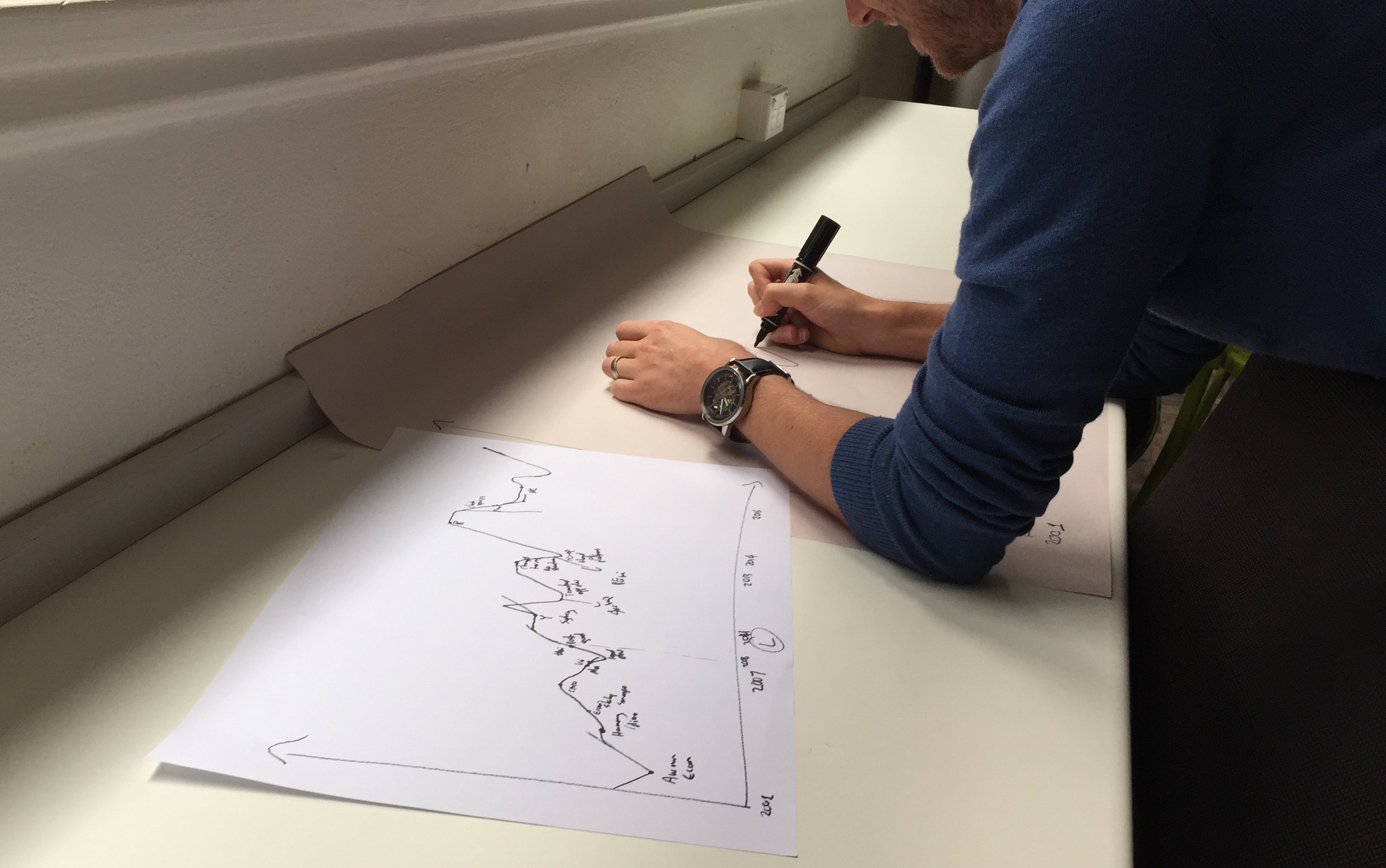
After 20 minutes, most people were done so we stuck the journeylines up around the room and each person talked the group through their own. With a group of 15, this took about an hour to get through.
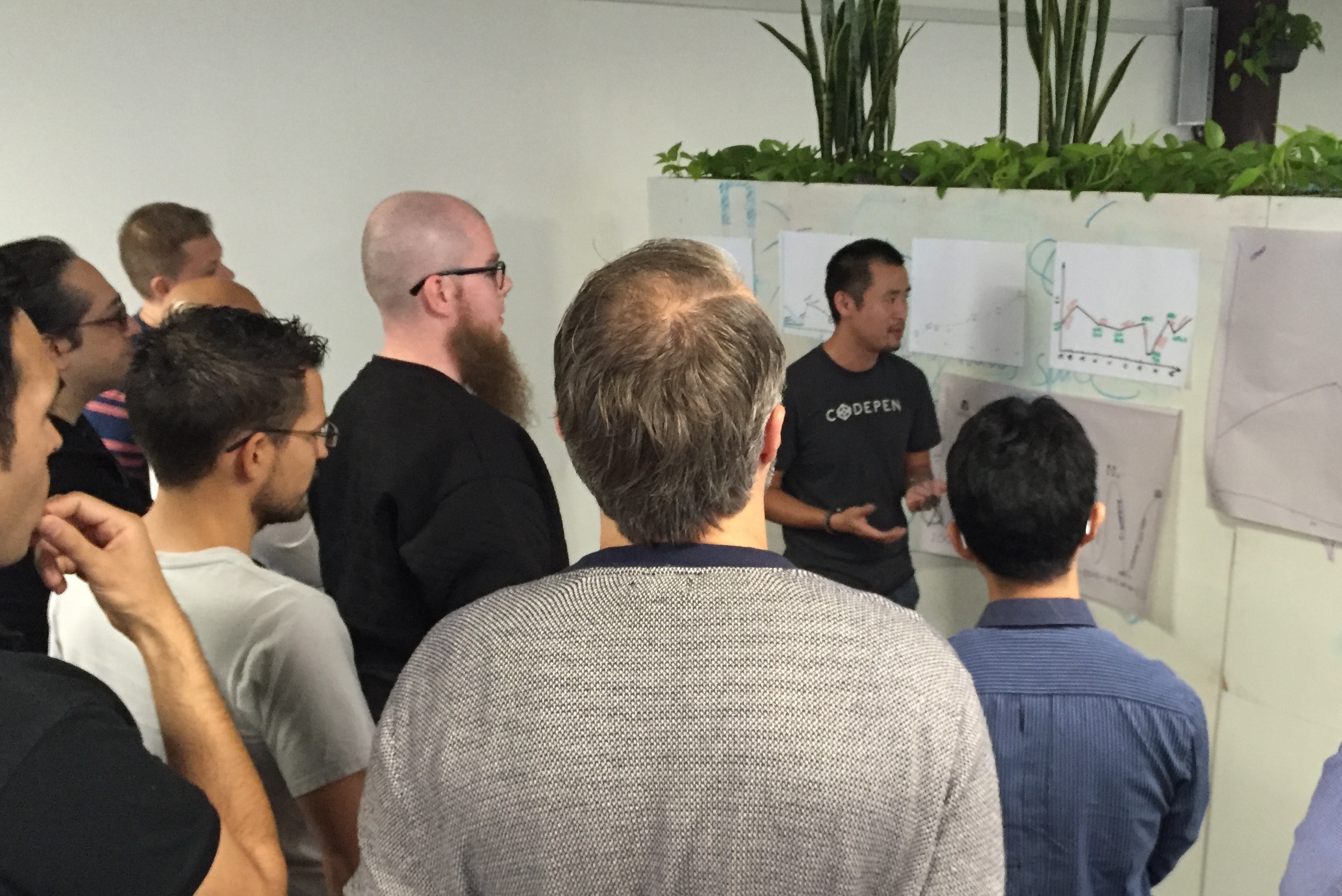
I think the exercise worked well and it certainly achieved the aims of people sharing their stories and getting to know each other a bit better. 15 is the absolute largest group I’d do this with - the playback session would go on too long otherwise.
Session 2 - Future newspapers
For the next session I wanted the team to imagine what the future could be like. I originally planned to use the Future-spective exercise where a team imagines they are running a retrospective for a future project. However, I then stumbled across a few examples of similar exercises which get the team to create a news report or newspaper. As we are in the news publishing business, this was too good an opportunity to pass up. (Yes, I am aware of the irony of a digital team creating a print newspaper).
I asked the team to split up into three groups with the objective of creating a newspaper front page from 2 years in the future. I wanted them to imagine what the paper might say about us, what we’d achieved and how we’d achieved it. The groups started brainstorming their stories and designing a newspaper. The only materials needed are large sheets of paper and various coloured markers.
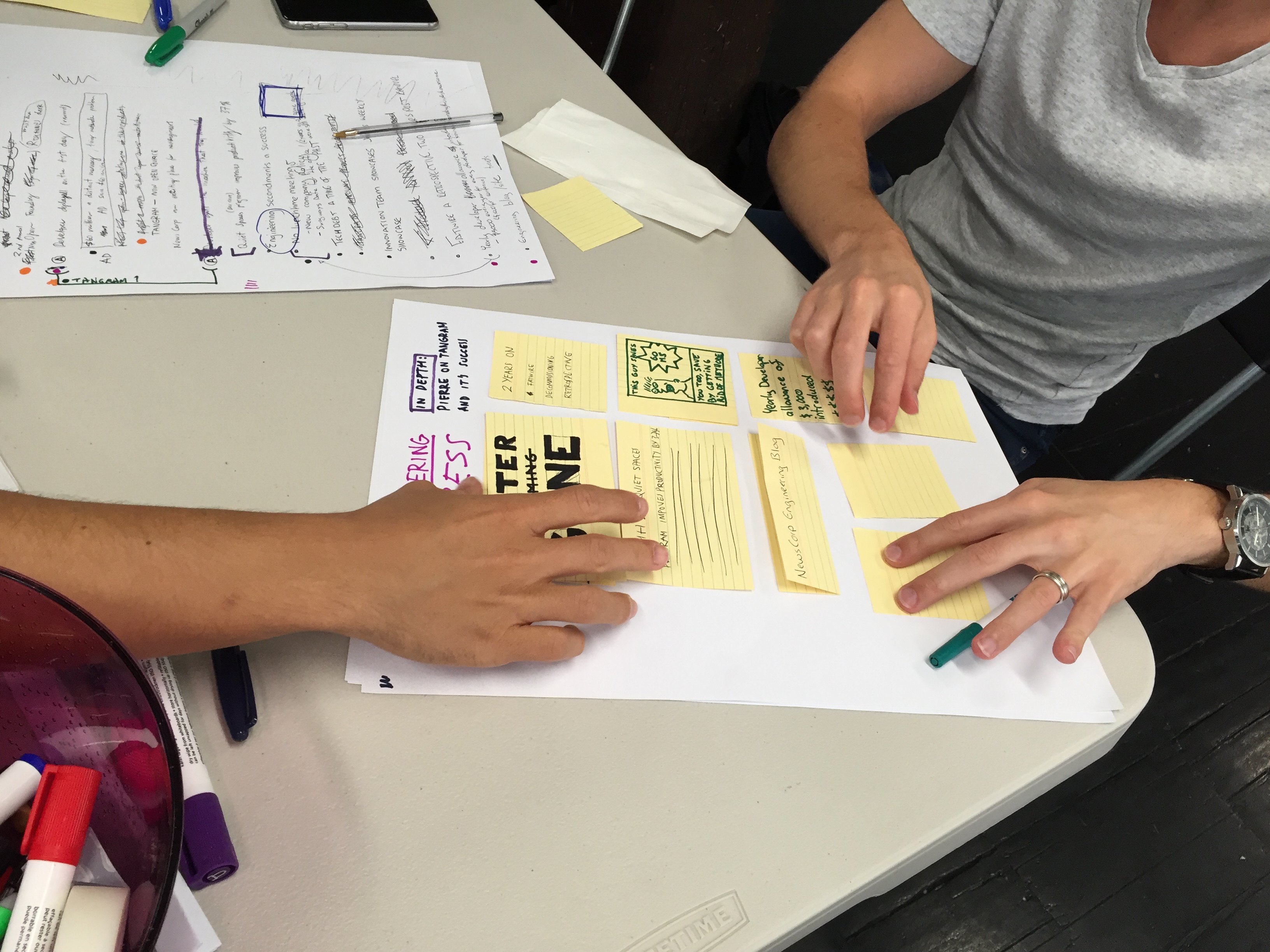
I found that 45 minutes was about enough time although the groups needed prompting halfway through to move from planning to actually laying out their page. One team continued working through the lunch break to make it as good as they wanted.
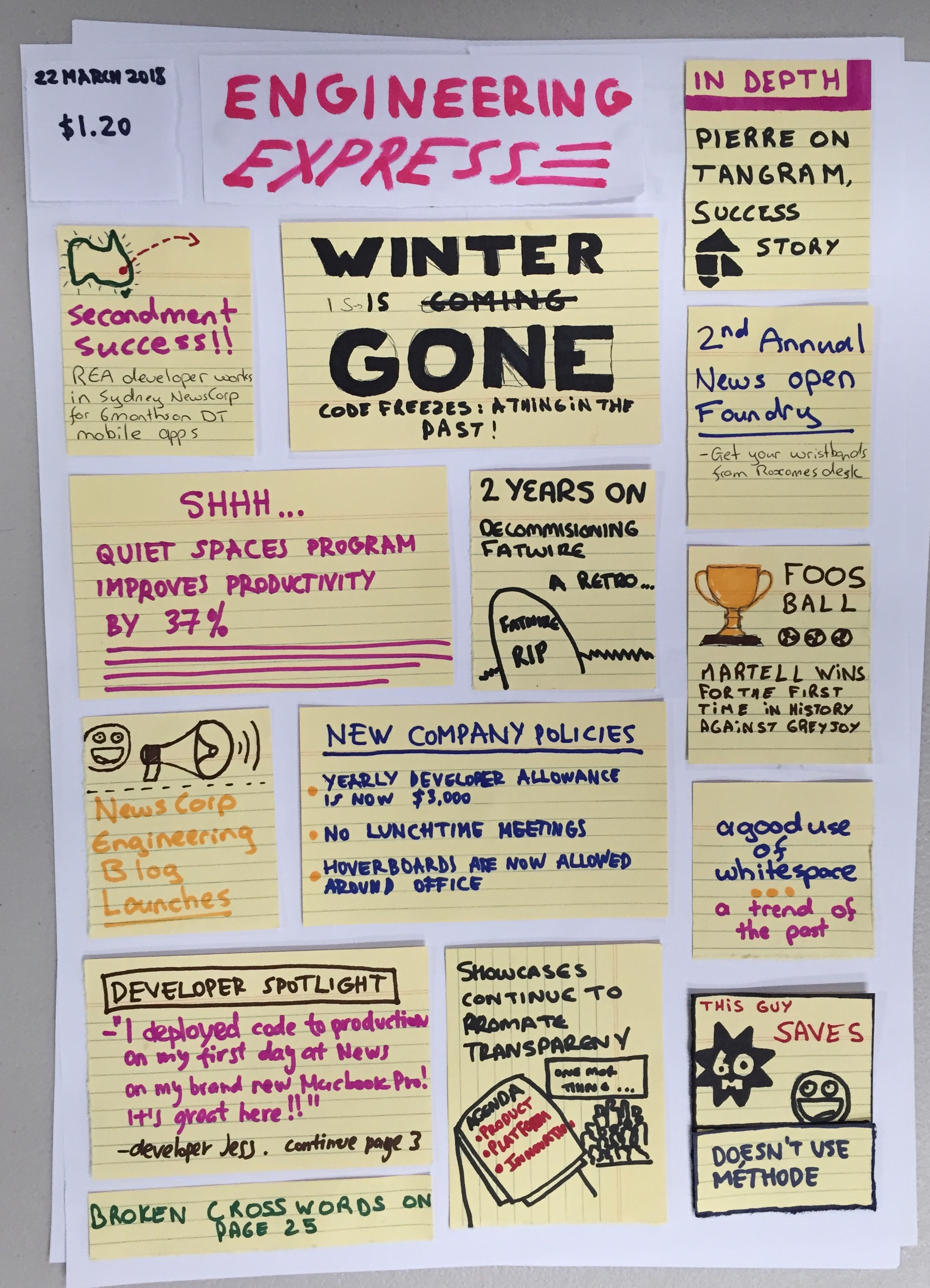
After a break, everyone came back together to go through the front pages and what they’d delivered. With three groups, this took around 15 to 20 minutes to complete. The exercise was useful to get people into a frame of mind where anything is possible and to talk about what’s important to them.
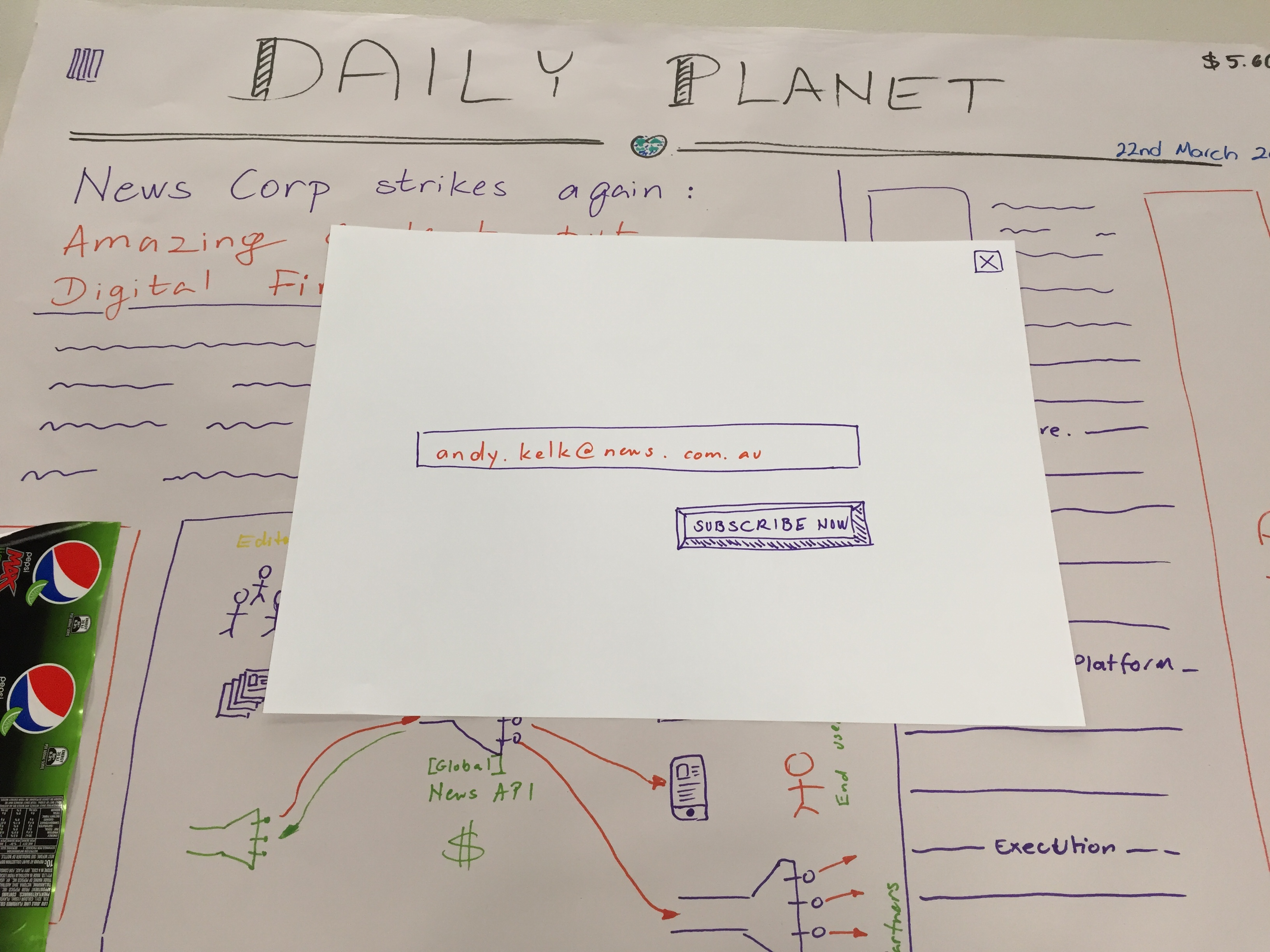
Session 3 - OKRs
After imagining the future, I wanted to start channeling the ideas into objectives and actions that we could work on. I introduced the concept of OKRs (objectives and key results) and how they differ from traditional KPIs. The primary points are that OKRs are transparent and they are not tied to compensation. What I wanted was a set of objectives that we could track collectively throughout the next 12 months.
I gave the team five to ten minutes to start writing up objectives on sticky notes and posting them up on the wall. We then went through all of the objectives and grouped them into themes. That left us with 15 to 20 themes; I wanted to narrow them down to between five and ten. With some quick dot voting (four votes per person) we managed to settle on a list of nine.
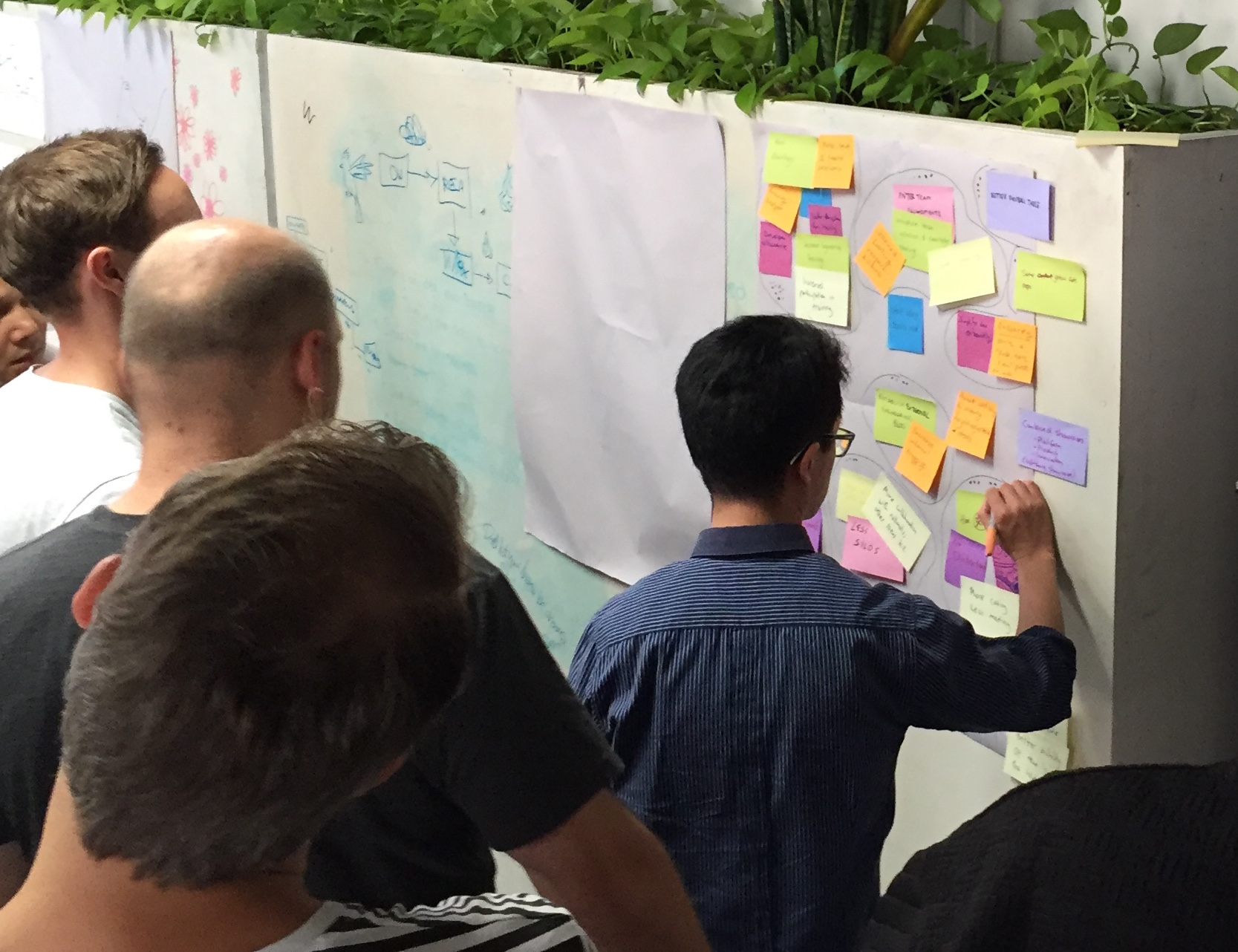
I then divided the team up into four groups and gave each two objectives. I asked each group to come up with two or three key results that we could measure to know that we are heading in the right direction. I impressed on the group the need to make the results SMART. We then got back together and each group presented the output of their discussion and got feedback from the rest of the team.
At the end of the session we had the beginning of a plan of what we wanted to achieve, some ideas of actions we could take to achieve them and some measures we could track to see how we’re doing. We need to do some more sessions to refine these but by this part of the day, everyone was starting to flag.
Session 4 - Bringing it back
After a refresher break, it was time to close out the day with a final session. There were no special facilitation techniques here - just a wrap up and discussion on how to bring what we’d done back to the office. This is often a missed step when there’s an offsite event - everyone gets into the right mindset, produces some great work and then the moment you step back into the office… it’s gone.
I asked the team to discuss how we could keep focus on the objectives we’d set in daily life. We resolved to revitalise our weekly meeting and include a regular retrospective session. We also agreed on a new visual board tracking our metrics and oriented around the nine objectives.
By the end of the day everyone looked tired but I felt an energy that had built through the day. With clarity on our objectives and relationships built, I am pleased with the outcomes of the day.